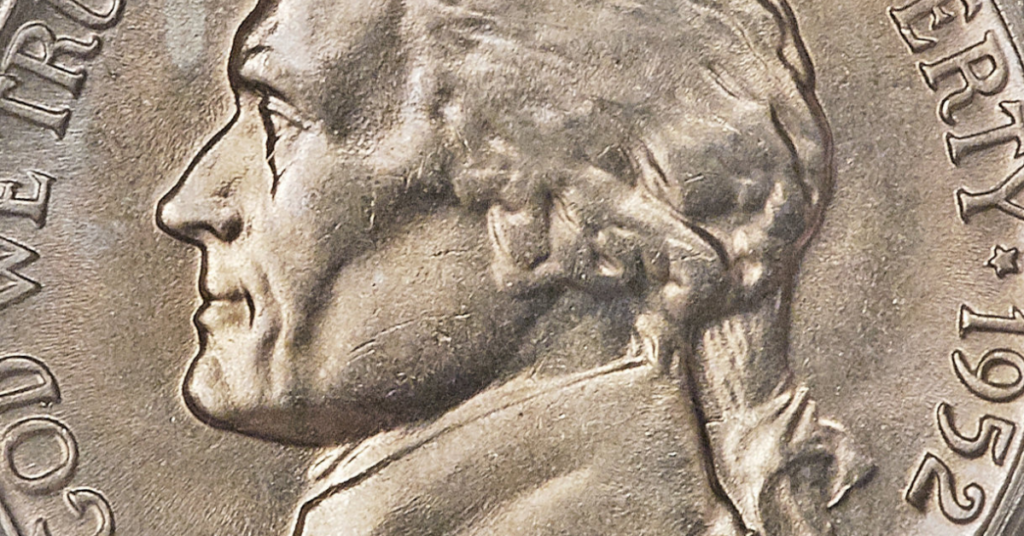One frequently asked question here at Heritage Auctions is, “What makes a modern circulating coin valuable?”
Buy, Value or Appraise Your US Coins
Bid or buy US coins for sale, value your item, or request a free appraisal to sell your collection.
While most circulation strike coins minted from the 1960s to present are very common and are worth very little beyond their face value, coins do turn up in our auctions which sell for hundreds or even thousands of dollars despite a seemingly recent date.
Sold for:$2,040.00
Examples include a 1999 Delaware State Quarter graded PCGS MS68 which sold for over $1,400 and a 2009 Presidency Lincoln Cent in MS69 Red which sold for just over $2,000.
The key factors to consider when reviewing whether or not your modern coin has any value beyond its face value are condition, mintage, and whether or not it may be a variety or error.
Condition
To begin, any coin with large numbers produced will typically not be an expensive piece if it has been used in circulation and develops wear. However, coins occasionally become “conditionally rare” if only a few pieces are set aside to remain in the very best condition or if most coins are weakly struck and therefore not well produced.
An example would be certain dates of Lincoln Cents in “Red,” which means that the coins have their original coppery color and have not dulled to what collectors term “Red Brown” or “Brown” condition. Recent cents are almost always in brilliant “red” condition, but Lincoln Cents from the 1909 to 1930 era have often dulled and toned over time, making high-grade “red” coins more valuable. The 2009 Lincoln Cent mentioned above combines both condition and red color, making this far more valuable than most of its peers.
1952-D Nickel, MS67
Tied for Finest With Five Full Steps
Sold for:$2,400.00
Jefferson Nickels are another example of a condition rarity. The vast majority of Jefferson Nickels that one might find from the 1950s, 60s, and 70s can just be spent, even if the coins appear to be in relatively nice condition. Given their large mintages, they are not rare coins overall. However, only a small percentage of certain years were fully impressed and struck by the dies at the US Mint, so relatively few coins qualify for the “Full Steps” designation that a grading service will assign to a fully struck coin. Certain years of Jefferson Nickels with Full Steps can be valuable, such as the 1952-D Nickel graded MS67 5 Full Steps by NGC that we recently auctioned for $2,400.
Mintage
Occasionally, coins are struck which have low mintages. For example, the 1996-W dime, minted in West Point, New York, had a mintage of only 1,457,000. This may not sound particularly small, but it is a fraction of the mintage in Philadelphia that year, which was a whopping 1,421,163,000 coins! As a result, 1996-W dimes are worth a premium even though they are a fairly recent issue.
Variety and Error Coins
Finally, varieties and errors may command a premium over regular coinage. When there is a mint mistake, collectors are often willing to pay a premium for these coins. The 1990 No S Proof Cent is a great example. Proofs, or special mirrored coins intended for collectors, were supposed to have the “S” mintmark in the 1990s, indicating that these coins were made in San Francisco. However, the “S” mintmark was inadvertently left off of some proofs, creating the rare “No S” variety. These coins can be worth a few thousand dollars if you are lucky enough to find one in a Proof Set.
1990 No S Cent, FS-101, PR66 Red Deep Cameo
Among the 100 Greatest U.S. Modern Coins
Sold for:$2,340.00
Whether you find an error or variety or have set aside a coin that is in far better condition than average, it is worth looking through your collection and your change! You never know what you might find.
To browse our auction archives or upcoming auctions, visit our Rare U.S. coins department. If you have questions on what a coin is worth, reach out to our experts for a free coin appraisal.
